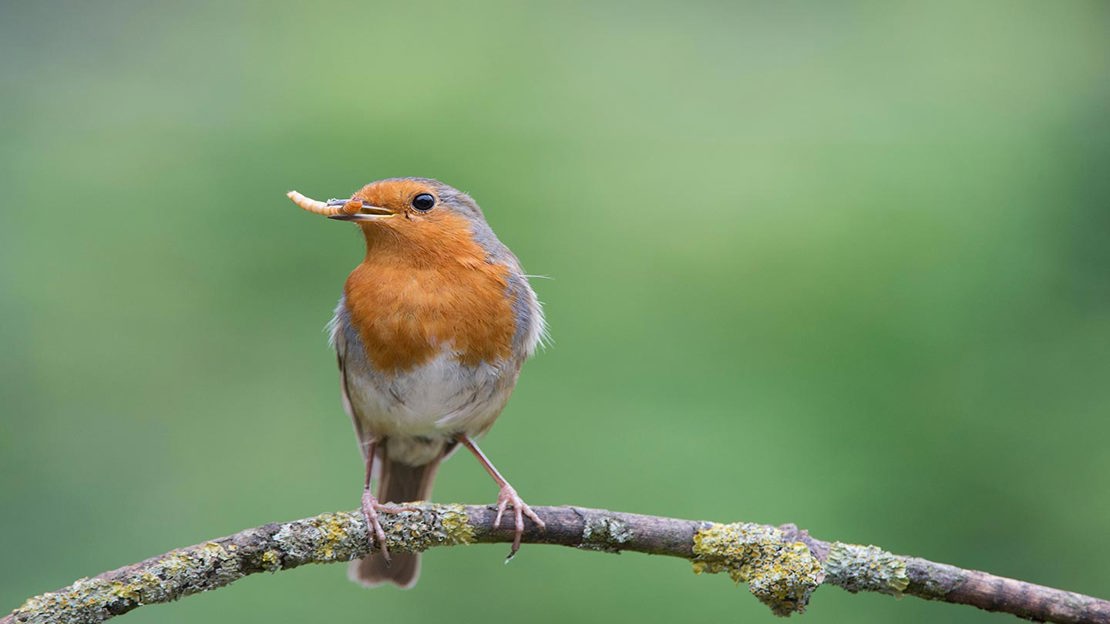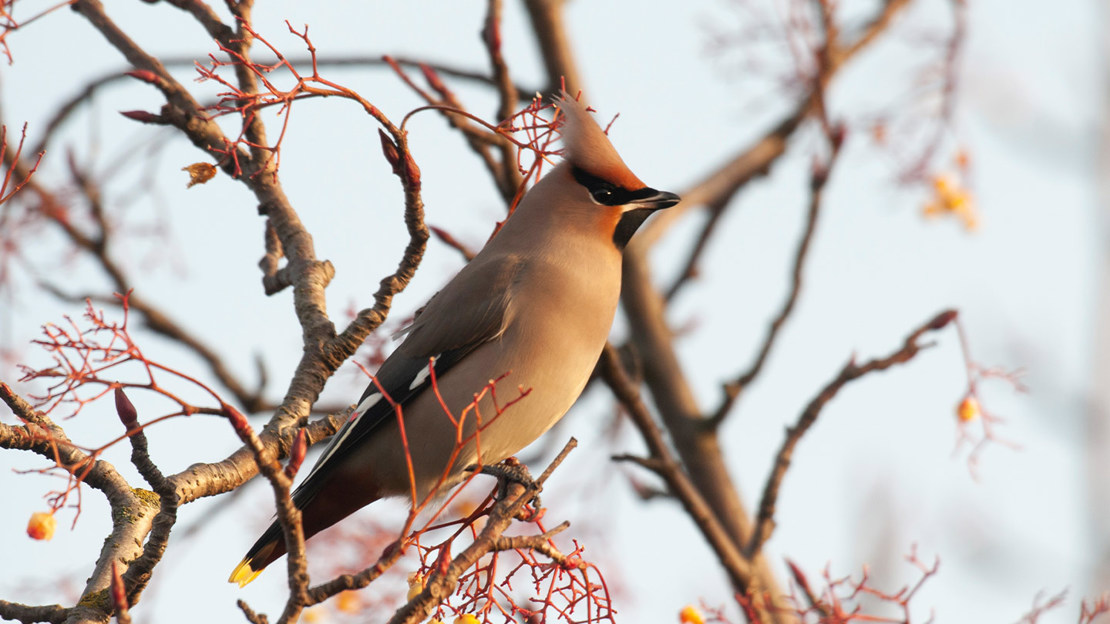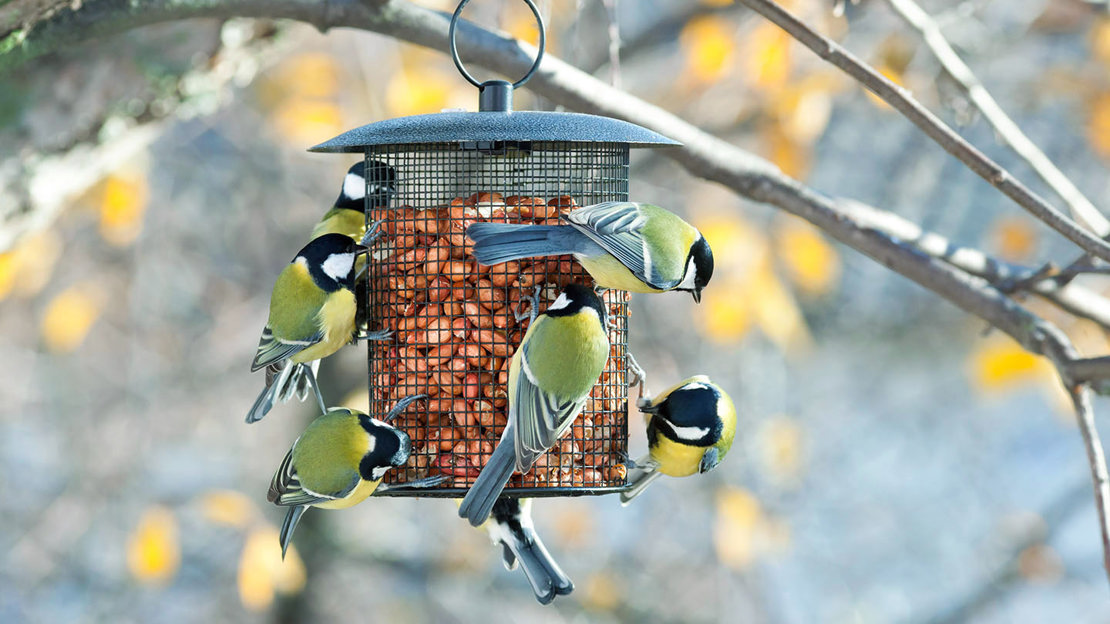Trees for birds
Looking for ways to attract more wild visitors to your garden? Buy fruiting trees birds (and you) will love.
Visit our shop
Digital content editor
Our feathered friends are welcome visitors whatever the season. So add a bird feeding station filled with their favourite treats to your garden, yard or windowsill and have them flocking by in no time.
Not all birds eat the same things, so it’s important to offer a variety of tempting morsels to maximise your bird feeder’s wow factor.
In fact, all birds have their favourites and are most attracted to foods that replicate their natural diet – things like nyjer seeds, grains and mealworms.
But who eats what?
High-energy foods are also vital, particularly during cold spring and winter days, while high-protein foods are essential when birds are going through their moult during late summer. Think suet and other fats, which are great for all sorts of different bird species. Just avoid fat balls in summer as they can melt in the heat!
When it comes to peanuts, they should be fresh and unsalted, and only be offered in a mesh that allows birds to take small pieces as chicks can choke on larger chunks.

Can you feed birds rice? Yes, both cooked and uncooked rice is a suitable snack for hungry birds, so long as it's unsalted. It’s also a good idea to rinse your rice to get rid of excess starch before putting it out. And don't use instant rice – it's just not suitable.
Can birds eat bread? It won’t harm them, but it’s not nutritious, so it’s best avoided and replaced with seeds, nuts, invertebrates like mealworms, and other natural foods.
Anything else? Cooked pasta, shredded cheese and uncooked and unsalted bacon rind are also likely to be gobbled up by your garden visitors.
Just remember not to feed anything salty or mouldy – so no salted peanuts or rice, or mouldy bread. Don’t put out cooked porridge (though porridge oats are fine). And avoid grapes and dried vine fruits like raisins and sultanas if you have a dog, as these can be toxic.
It’s not only the types of food that tickle particular birds’ fancy, but also where they’re fed.
Many birds, such as tits, sparrows and finches, will tuck into seeds and nuts suspended from hanging feeders or scattered on bird tables. But some birds, such as blackbirds, dunnocks and wrens, avoid them and prefer to forage on the ground, turning over leaf litter and getting stuck into the invertebrates and seeds they find.
Cater to all tastes by sprinkling crumbled fat balls and seeds beneath shrubs for ground-feeding birds, and smearing fat mixtures into the cracks and crevices of branches and bark for treecreepers, nuthatches and woodpeckers.
If you can, try moving your bird feeders around your garden every few months or so. This can help:
Make sure you position your feeders somewhere sheltered with a little cover nearby (but not so much that birds can be attacked by predators!). It’s worth avoiding walls and other possible ambush posts too. And don’t be disappointed if the birds don’t immediately flock to your new feeders – it can take them a little bit of time to get used to it!

Planting for wildlife is one of the most satisfying ways to feed birds and other creatures such as bees, butterflies and mammals. Trees are a great choice, producing berries, hard fruits like apples, or nuts.
Rowan’s orange-red berries are a favourite of mistle thrushes, who will guard them jealously from other greedy visitors. During bumper years, the berries can last for several months.
Ivy is another firm favourite – particularly during colder months when its late-ripening berries provide extra sustenance for wood pigeons and thrushes. Wrens will also weave their way among its glossy leaves while hunting for hibernating insects.
During autumn, fruits like crab apples are popular with blackbirds, fieldfares and redwings, as well as blackcaps – a warbler increasingly overwintering in the UK.
Looking for ways to attract more wild visitors to your garden? Buy fruiting trees birds (and you) will love.
Visit our shopBirds need a ready supply of clean, fresh water all year round, but it’s particularly important during summer and winter months when other sources are scarce.
Set up a hydration station: regularly top up bird baths during hot weather and make sure to keep them clean. Rinse them every day – particularly during warm spring and summer days – and allow them to dry before adding fresh water. During colder months, keep them ice free by floating a small ball on the surface.
If you don’t have a bird bath, you can always use a shallow tray or saucer, but always keep it clean.
Using food to tempt frequent flyers into your garden is a great way to help birds and hone your ID skills. But encouraging large numbers of birds into the same area comes with a higher risk of disease.
Keep everything clean by regularly scrubbing your feeders with hot soapy water and giving them a good rinse. Always use separate brushes, sponges and other cleaning materials for your bird feeders and bird baths. If you can, wear gloves while cleaning, and wash your hands thoroughly afterwards.
Don’t forget to sweep any spilled seeds or droppings away from your feeders and keep them free of wet or mouldy food.
If you do notice sick birds on your feeders, stop putting out food, give them a good clean and store them for a couple of weeks, then try again.

Once you start feeding your garden birds, it’s important to regularly top up your feeders and stick to your routine.
While most visitors will adapt and move to new feeding grounds when their natural food gradually runs out, a sudden drop off in feeding can put them on the hop – especially during spring, when they’re breeding, and in winter, when they need extra energy to keep warm during the long, cold nights.